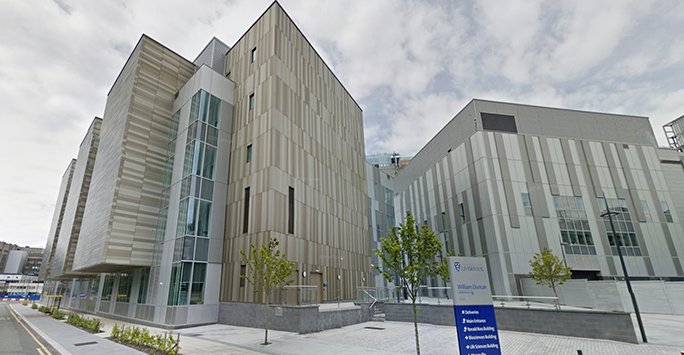
We spoke to Dr Christina Birch to discuss a unique project that aims to better understand our environmental impact as an Institute. This study was produced from the findings in the recent staff and student travel survey, as well as examining the energy consumption in the William Henry Duncan Building.
Dr Christina Birch - Sustainability lead
Over the past 12 months I have been gathering and analysing data on the energy consumption and carbon impact of our Institute as part of a research project funded by the University’s Sustainability Fund.
Now coming to its conclusion, the study has produced some fascinating insight into the impact we have, and how some simple changes to our operations and behaviours could vastly reduce and improve our energy consumption.
The one-year study was aimed at understanding the Institute’s carbon emissions, and informing future behaviour and strategy; ensuring we are on track to meet, if not exceed, the targets laid out as part of the University’s net-zero goals.
I was tasked with gathering and analysing data on staff travel, lab electricity usage, delivery and transportation of goods, as well as the heating of teaching and research spaces within the Institute.
I was surprised mainly by how much carbon could be saved by adapting our travel methods. For example, if all the car and diesel users in the Institute swapped to EV cars, this would save around 1057kg CO2 per person each year, while swapping to trains or buses would save 705kg CO2 and 397kg CO2 per person each year respectively.
On a more positive note, I was pleasantly surprised that almost half (48%) of ILCaMS staff members walk, cycle or use public transport to travel to work. I think we need to recognise this, whilst still working on reducing our carbon emissions.
Our project also looked at how ILCaMS staff could help to make our work more carbon efficient, through initiatives such as the Laboratory Efficiency and Assessment Framework (LEAF). It has been great to see so much engagement with the scheme, and I would highly recommend any lab to sign up if they haven’t done so already!
We also carried out an energy audit of the William Henry Duncan Building, the results if which have now been delivered to the University’s Energy Team.
Some key figures:
- If just the 15 car-users swapped their diesel and petrol cars for an EV car, the university would save the amount of energy it takes to charge 1,929,936 smart phones per annum.
- 72% of the respondents were car drivers, if we multiply this across ILCaMS (approx. 580 staff members), we assume at least 301 staff members have cars and drive to work. If all ILCaMS staff members swapped their petrol and diesel cars for EV cars, this would save the same amount of energy as consumed by 40 family households per annum.
- If every journey was made by bus for the 29 respondents, the university would save the equivelent greenhouse gas emissions as recycling 4 tons of household waste.
- If every journey was made by train for the 29 respondents, the university would save the equivalent of 48 barrels of oil being consumed.
What next?
Christina and Kris have also collaborated with the "Addressing the Environmental Cost of Student Doctors Commuting to Clinical Placement" project. The project funded the purchase of bikes which are made available to medical school students to help them get to their placements in a more energy efficient way. Properly implemented, this scheme has the potential to reduce carbon emissions by 45.6kg CO2 per student placement. The final report will also be shared with the Faculty Sustainability Team, to show how similar investigations could be carried out in other Institutes.